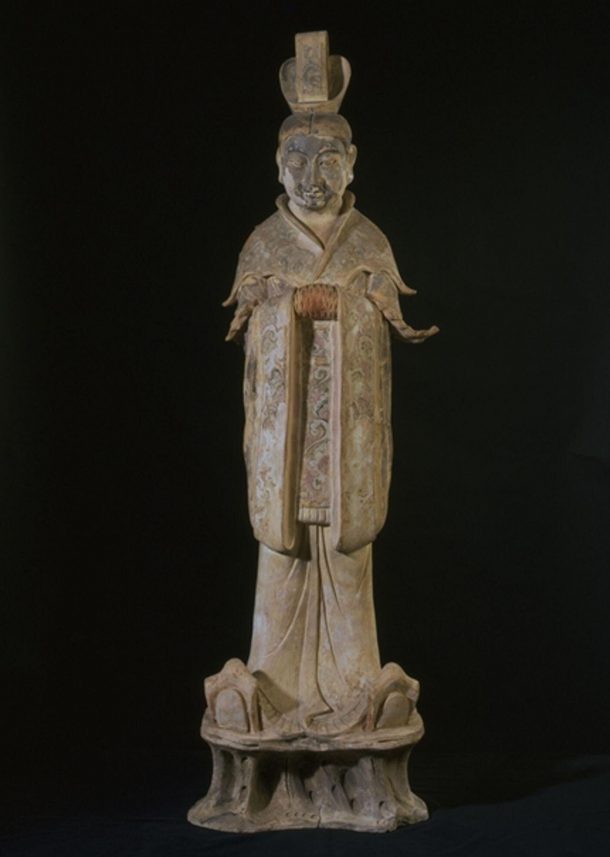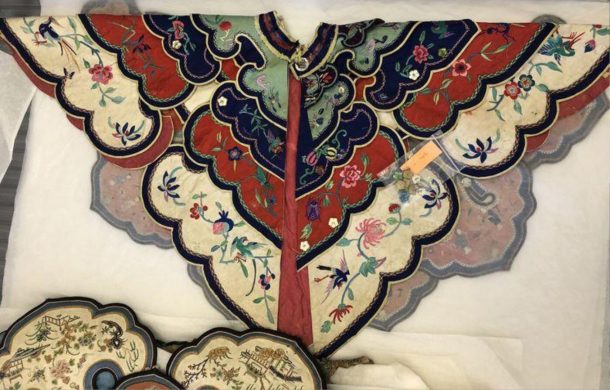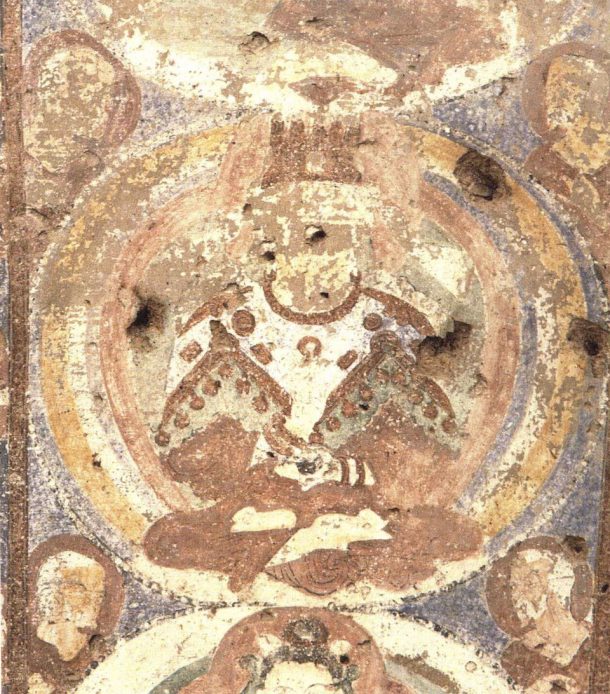Yicong Li is an MA student and one of three students awarded funding through The Karun Thakar Scholarship Award in 2021. Below is a short introduction to her research in progress.

The ‘post-90s’ in China is a young generation that grew up with intensive exposure to costume dramas and historical films. As one of the cohort, I have a passion for traditional dress and related visual culture.
Collecting early twentieth-century textiles was one of my hobbies, which drove me to visit the Victoria and Albert Museum repeatedly. There I examined some remarkable historic pieces on display. Combinations of mass-manufactured fabrics and hand-made embroideries created a harmonious visual effect, revealing the positive changes that older generations made in an ever-changing modern society.

While historic clothes have personal histories, I am more curious about wider cultural phenomena they were once part of, rather than their relationships with specific individuals. After entering the MPhil in Art History programme offered by the Tsinghua University, I have turned this interest into inspiration for my independent research.
As a first-year graduate student and a newcomer to the area of Buddhist art, I focused on the costumes worn by the Buddha figures. This approach allowed me to explore the long-lost divine world in Gandhāra (a historical region that lies in present-day northwest Pakistan and eastern Afghanistan) with a sense of both familiarity and excitement.
The iconography of the so-called ‘bejewelled Buddha’ quickly drew my attention. Buddha representations of this type depict an irregularly shaped cape over the figure’s monastic robes, evoking a crowned and enthroned ruler. The unusual cape, which seems to be made of four pointed pieces of fabric adorned with ornaments and pendants, reminded me of the traditional Chinese costume, Yunjian (cloud collar). I was eager to learn the history of the cape and its possible connections with its Chinese parallel.

Reviewing the literature available to me, however, I found that scholarly discussions on this topic were limited. Thus I decided to organise related pictorial materials to see if I could discover any fascinating details about this cape. After one year of exploration, I was glad to find that visual evidence for the evolution of this cape is scattered but not scanty.
Given the chronological and geographical distribution of relevant materials, the cape’s popularity was far more than a brief, regional phenomenon. As scholars have observed, this cape once functioned on certain Gandhāran sculptures of Kushan nobility as a symbolic element (Miyaji 1981: fig.11). Similar motifs then sporadically appeared on sculptures of Buddha until the fifth century CE, a phase when ideas of Mahāyāna Buddhism promoted the popularity of independent votive icons.
Presumably, Buddhist followers in this time borrowed the cape from older iconography of royalty in order to visualise the Buddha’s position as their spiritual leader. However, it was the lesser-known regional schools of Buddhist art in the Hindu Kush region and Kashmir that facilitated the formation of the bejewelled Buddha imagery from the sixth century CE onwards [Fig.4].

As part of this imagery they created stylized variants of the cape motif for both symbolic and decorative purposes. Through these images, the distinctive cape travelled to Central Asia, China and even Byzantium (e.g. The Mozac Hunter Silk) by the eighth century CE, testifying to the extensive material and intellectual exchange between Gandhāra and major civilizations in ancient Asia.
Currently, there are two clear paths for me to take for further research. The first path is to investigate other elements of costumes used by the bejewelled Buddha imagery. This task will reveal the dynamic iconography-constructing process in the social and religious contexts of Gandhāra. The other is to track the evolution of the original Gandhāran-derived cape in China, which will reveal how the Chinese visual culture localized foreign influences. Both of these paths offer potential new insights in a largely understudied aspect of the history of dress, but will also require persistent effort and material from many sources.
Therefore, I would like to express my deep gratitude to The Karun Thakar Fund and the Victoria and Albert Museum. Their generous sponsorship of young scholars has prominently promoted research in the field of African and Asian textiles and dress. With their financial support, I will be able to acquire data from collections around the world and publish my findings. I will also have the valuable opportunity to survey the historical relics in central and west China and initiate new art historical inquiries. Through these endeavours, I hope that dress in artworks can be not only a piece of personal belonging and evidence for identification but also a subject with independent narratives.
Further reading
T. Higuchi, Bāmiyān: Art and Archaeological Researches on the Buddhist Cave Temples in Afghanistan 1970–1978 (vol. 1: Murals), Kyoto 1983
B.I. Marshak, Legends, Tales, and Fables in the Art of Sogdiana (with an appendix by Vladimir A. Livshits), New York 2002
A. Miyaji, Lineage and Dating of ‘The Decorated Buddha’ of Bāmiyān in Ars buddhica, no. 137 (1981), pp. 11–34
U. von Schroeder, Buddhist Sculptures in Tibet: volume one (Indian & Nepalese), Hong Kong 2001


